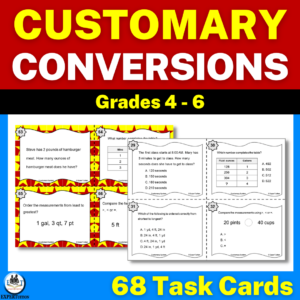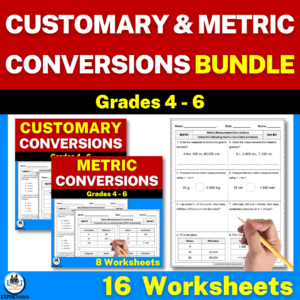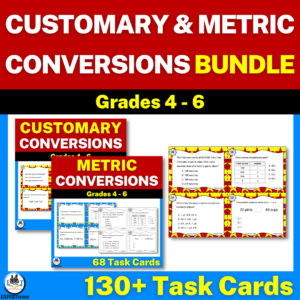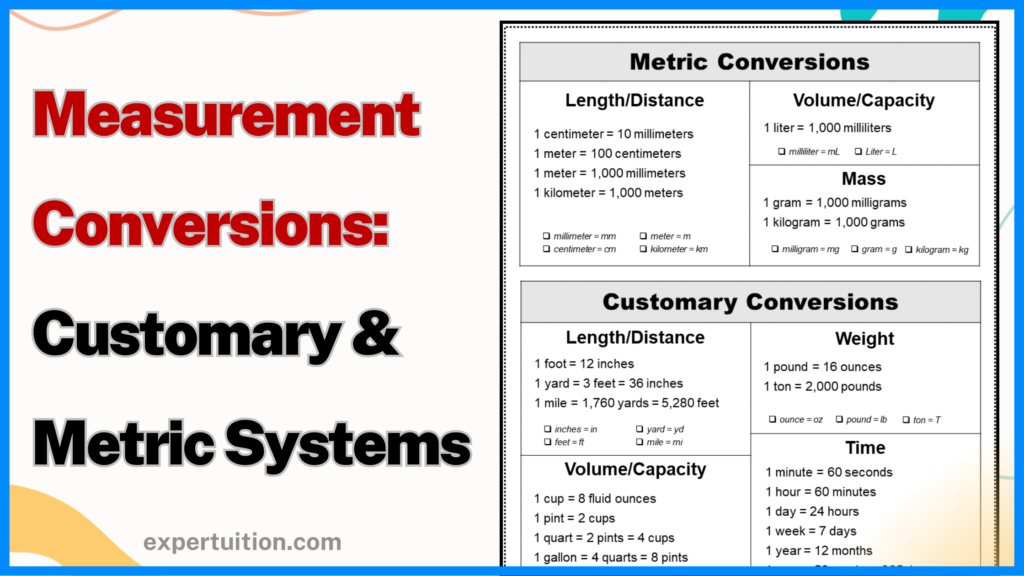
Measurement conversion acts as a link between various measurement units. This article addresses the two main measurement systems (the customary and metric systems), their units of measurement, and conversions between units within each system.
Measurement Systems
Measurement systems play an important role in our daily lives.
They provide standardized units for quantifying various aspects of the physical world.
The Customary and Metric systems are two of the most commonly used systems.
Each system has its own set of units for measuring distance/length, volume/capacity, mass/weight, and time.
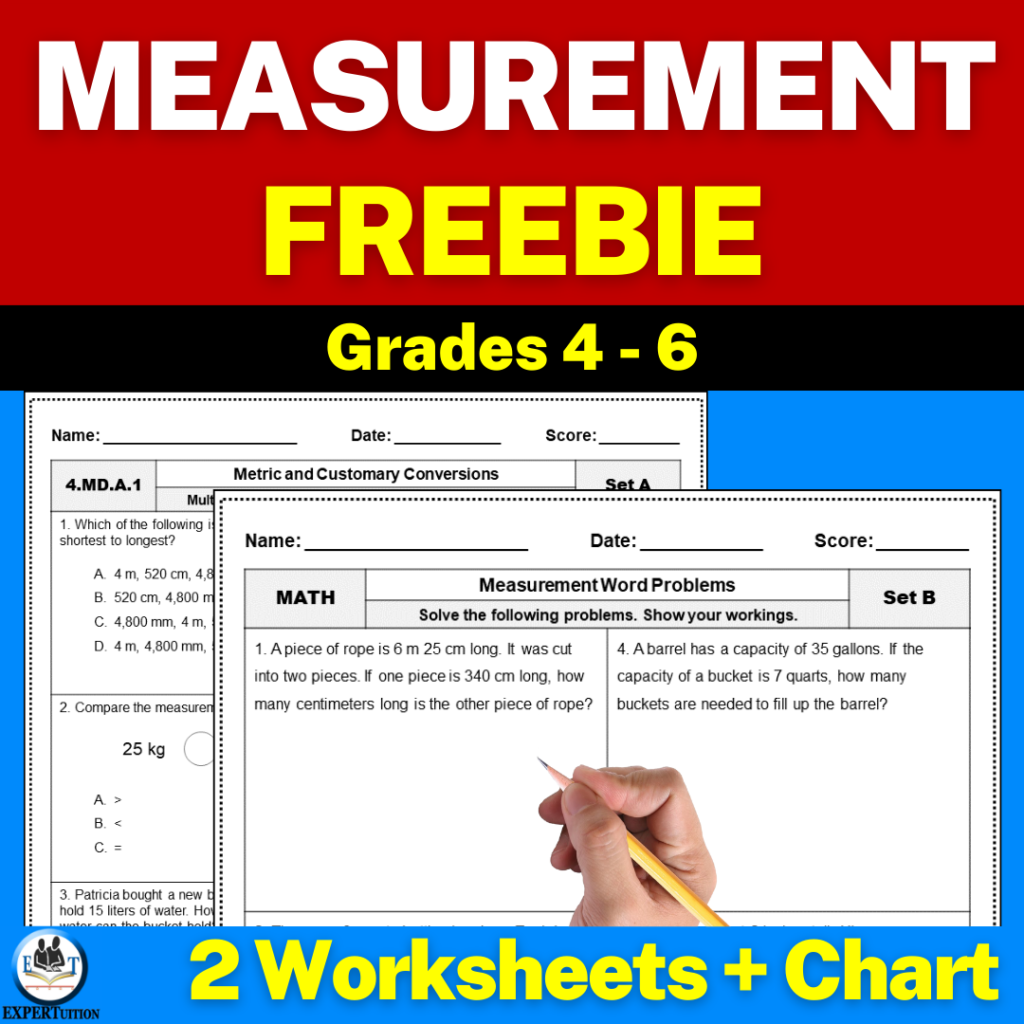
Join my email list and download freebies from my Free Resource Library.
The Customary System: Units and Conversions
The Customary system, which is primarily used in the United States, includes units that have evolved over time and through cultural practices.
It includes measurement units of length, volume, weight, and time.
Distance/Length
Inches, feet, yards, and miles are the primary units of measurement in the customary system for distance and length.
While inches and feet are commonly used for smaller measurements, yards and miles are reserved for larger distances such as roads or land.
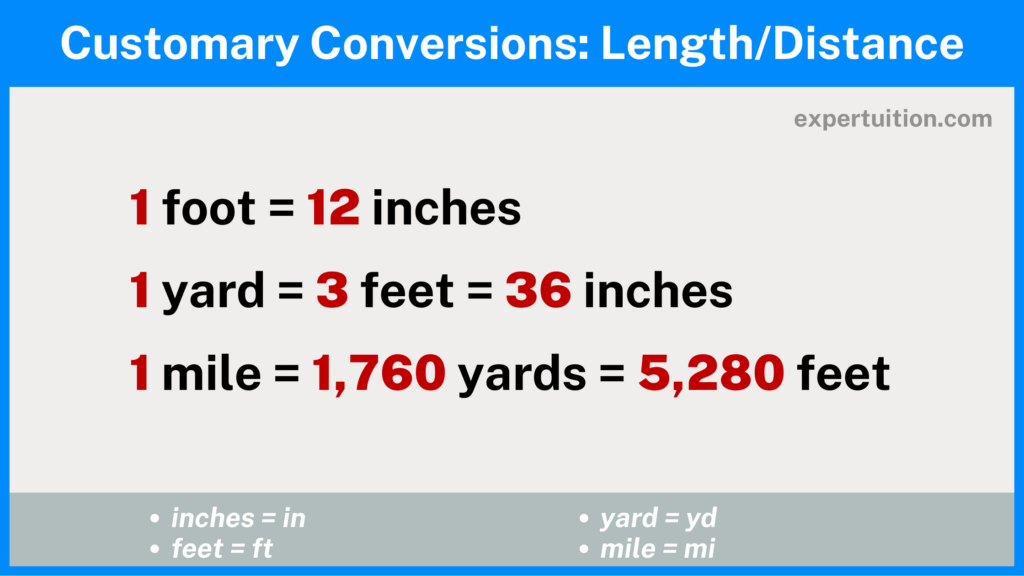
Inches: The inch is a unit of length commonly used for small measurements, such as the length of a pencil or the width of a book.
Feet: Defined as 12 inches, the foot is often used to measure the height of a person, the width of a room, or the length of a small object.
Yards: Equal to 3 feet or 36 inches, the yard is frequently used in landscaping, construction, and sports fields.
Miles: The mile, equivalent to 1,760 yards or 5,280 feet, is a unit of distance commonly used for road travel and geographical measurements.
Volume/Capacity
The customary volume and capacity units are fluid ounces, cups, pints, quarts, and gallons.
These units are often encountered in cooking recipes, liquid storage, and trade practices.
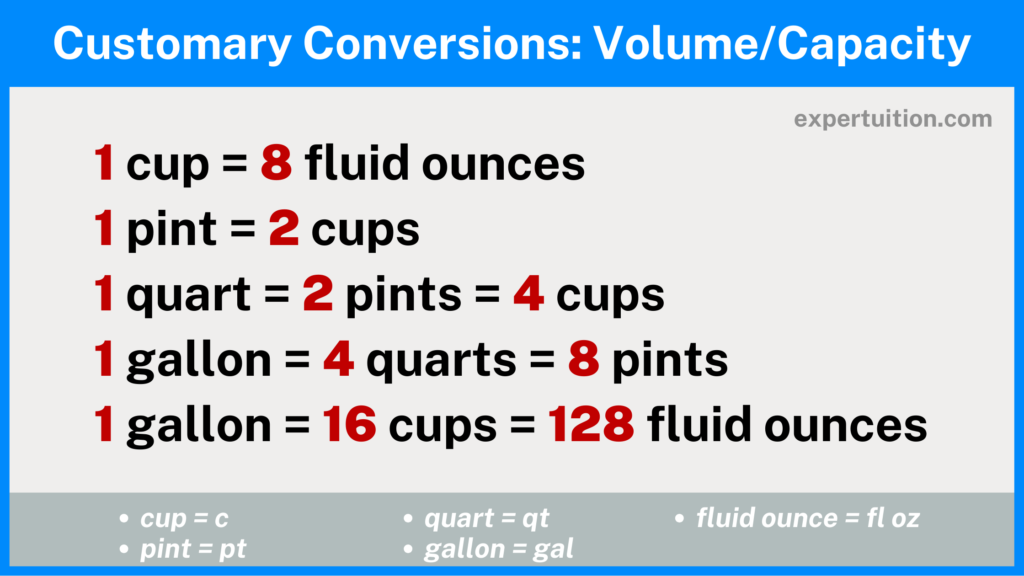
Fluid Ounces: A fluid ounce is the volume of one ounce of water, commonly used in cooking recipes and beverage measurements.
Cups: Equal to 8 fluid ounces, the cup is a convenient unit for measuring ingredients in recipes and serving sizes.
Pints: There are 2 cups in a pint, making it a common measurement for dairy products and beverages.
Quarts: A quart contains 2 pints or 4 cups, often used in cooking and food storage.
Gallons: Equal to 4 quarts or 8 pints, the gallon is widely used for measuring liquids, especially in the context of fuel and water consumption.
Mass/Weight
Ounces, pounds, and tons are the customary units for measuring mass and weight.
These units are widely used in everyday life and industry, ranging from weighing ingredients in the kitchen to measuring vehicle loads.
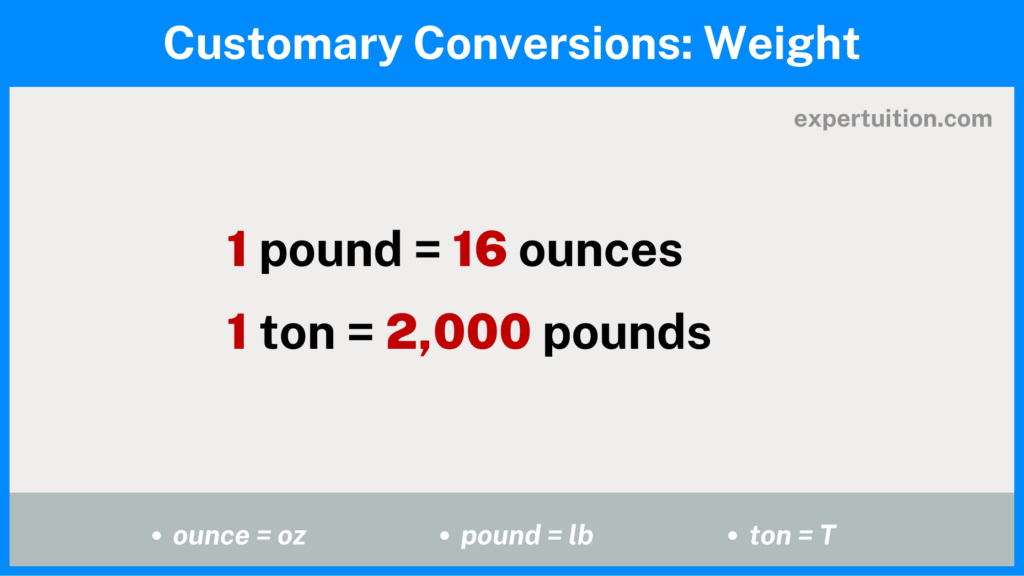
Ounces: The ounce is a unit of mass commonly used for measuring the weight of small objects or ingredients.
Pounds: Equal to 16 ounces, the pound is a standard unit for measuring the weight of people, animals, and goods.
Tons: A ton is equivalent to 2,000 pounds and is often used in industries such as shipping, mining, and agriculture.
Time
The standard units for measuring time are seconds, minutes, and hours.
These units govern our perception and organization of time, whether they are used to track the duration of an event or manage schedules.
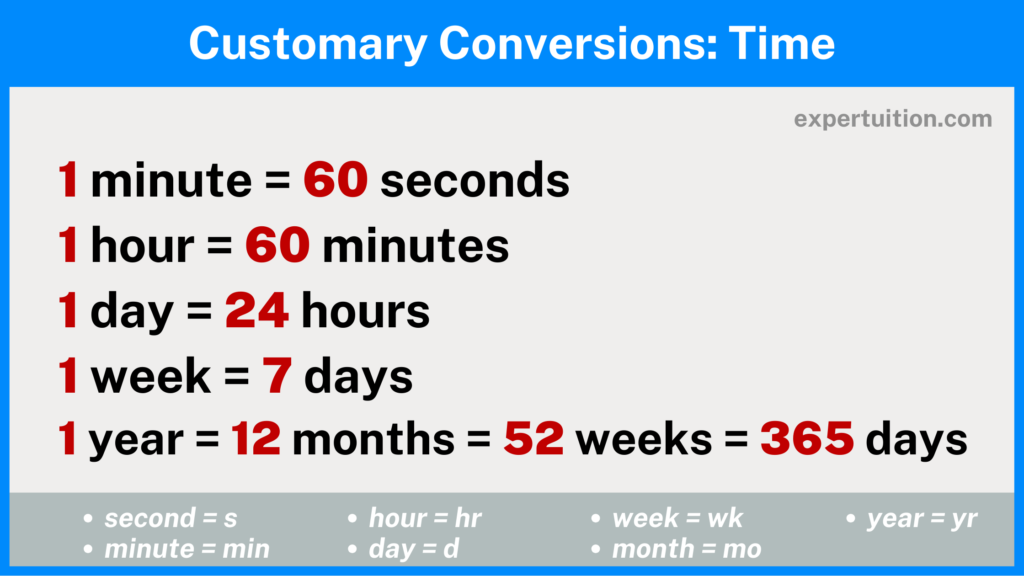
Seconds: In the Customary system, the second is the fundamental unit of time, and it is widely used for precise measurements and scientific calculations.
Minutes: A minute is made up of 60 seconds and is commonly used for everyday timekeeping and scheduling.
Hours: A unit of time equal to 60 minutes or 3,600 seconds, hours are used to measure longer durations such as work shifts and travel times.
Units for measuring time also include days, weeks, months, and years.
The Metric System: Units and Conversions
In contrast to the Customary system, the Metric system is widely used around the world due to its simplicity and coherence.
It provides a standardized approach to measurement through its base units and prefixes.
It includes measurement units of length, volume, and mass.
Distance/Length
Kilometers, meters, centimeters, and millimeters are the basic units of measurement in the metric system for distance and length.
The metric system, which is known for its simplicity, makes conversions and calculations of length easy.
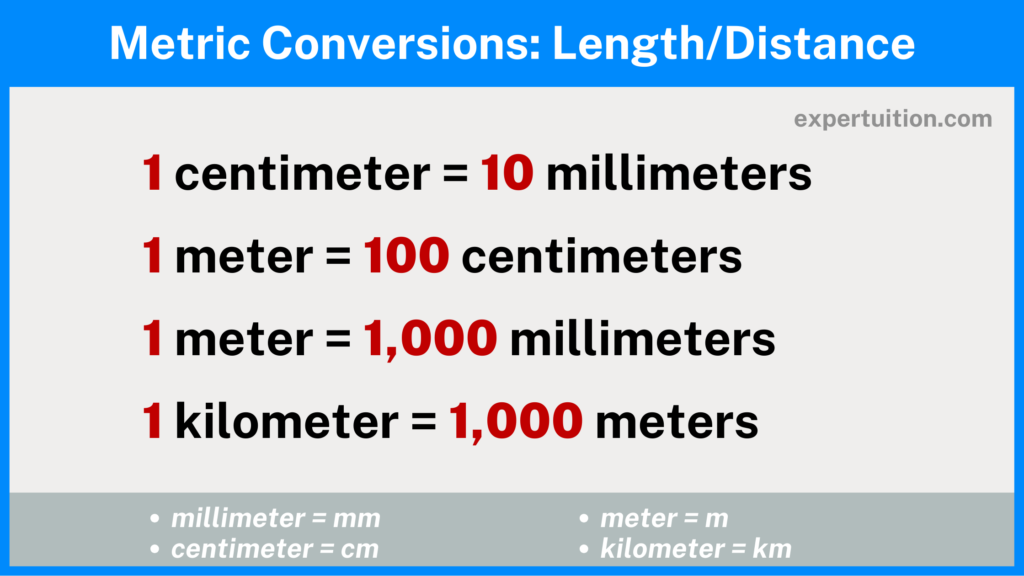
Kilometers: The kilometer is the unit of length in the Metric system, equal to 1,000 meters. It is commonly used for measuring long distances, such as roadways and geographical features.
Meters: In the metric system, the meter is the basic unit of length. It’s commonly used in scientific research, engineering, and everyday measurements.
Centimeters: The centimeter, which equals 1/100th of a meter, is commonly used to measure the length of small objects and distances.
Millimeters: The millimeter is 1/1,000th of a meter and is often used for precise measurements in fields such as engineering, medicine, and manufacturing.
Volume/Capacity
In the metric system, liters and milliliters are the primary units used to measure volume and capacity.
These units are clear and consistent when measuring liquid volumes or container capacities.
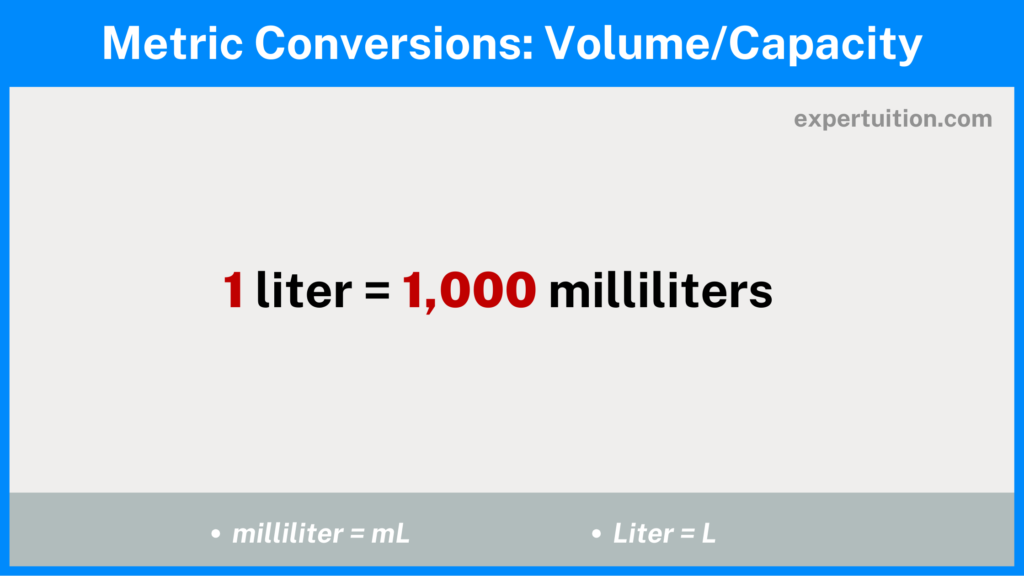
Liters: The liter is the base unit of volume in the Metric system, equivalent to the volume of a cubic decimeter. It is widely used for measuring liquid volumes in everyday life, commerce, and industry.
Milliliters: The milliliter, which equals 1/1,000th of a liter, is commonly used to measure small volumes of liquid, such as medication doses and ingredient quantities.
Mass/Weight
The metric system uses kilograms, grams, and milligrams to measure mass and weight.
The metric system simplifies scientific and practical measurements by providing a consistent progression from larger to smaller units.
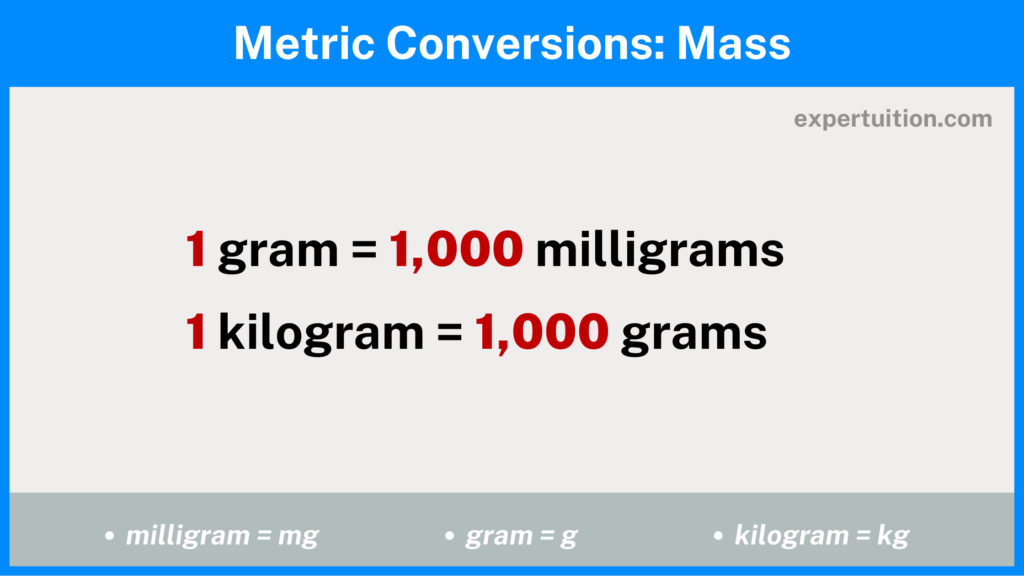
Kilograms: In the metric system, the kilogram is the basic unit of mass. It is widely used in commerce, industry, and scientific research.
Grams: A gram is equal to 1/1,000th of a kilogram. It is commonly used to weigh small objects and ingredients.
Milligrams: A milligram is 1/1,000th of a gram. It is used for precise measurements in fields such as pharmacology, chemistry, and nanotechnology.
Conversion strategies
Converting between units within each system is usually simple.
It involves multiplication or division by factors of ten or conversions based on defined relationships.
However, converting between Customary and Metric units requires an understanding of conversion factors and mathematical operations.
While some conversions may be straightforward, others require memorization or reference to conversion tables.
Measurement Conversion Worksheets and Task Cards
If you’re looking for engaging measurement conversions resources to use with your students, then my differentiated conversion products will be the perfect fit for you.
You can get these measurement conversion products from my TPT store or my WooCommerce shop.
Conclusion
In conclusion, measurement systems play an important role in our daily lives.
This post discussed the Customary and Metric systems, their measurement units, and unit conversions within each system.
By understanding the units of measurement within the Customary and Metric systems and mastering the art of conversion, individuals can enhance their ability to communicate, collaborate, and comprehend the world around them.
In today’s world, proficiency in measurement conversions is still a valuable skill, whether in scientific endeavors, engineering projects, or everyday tasks.



